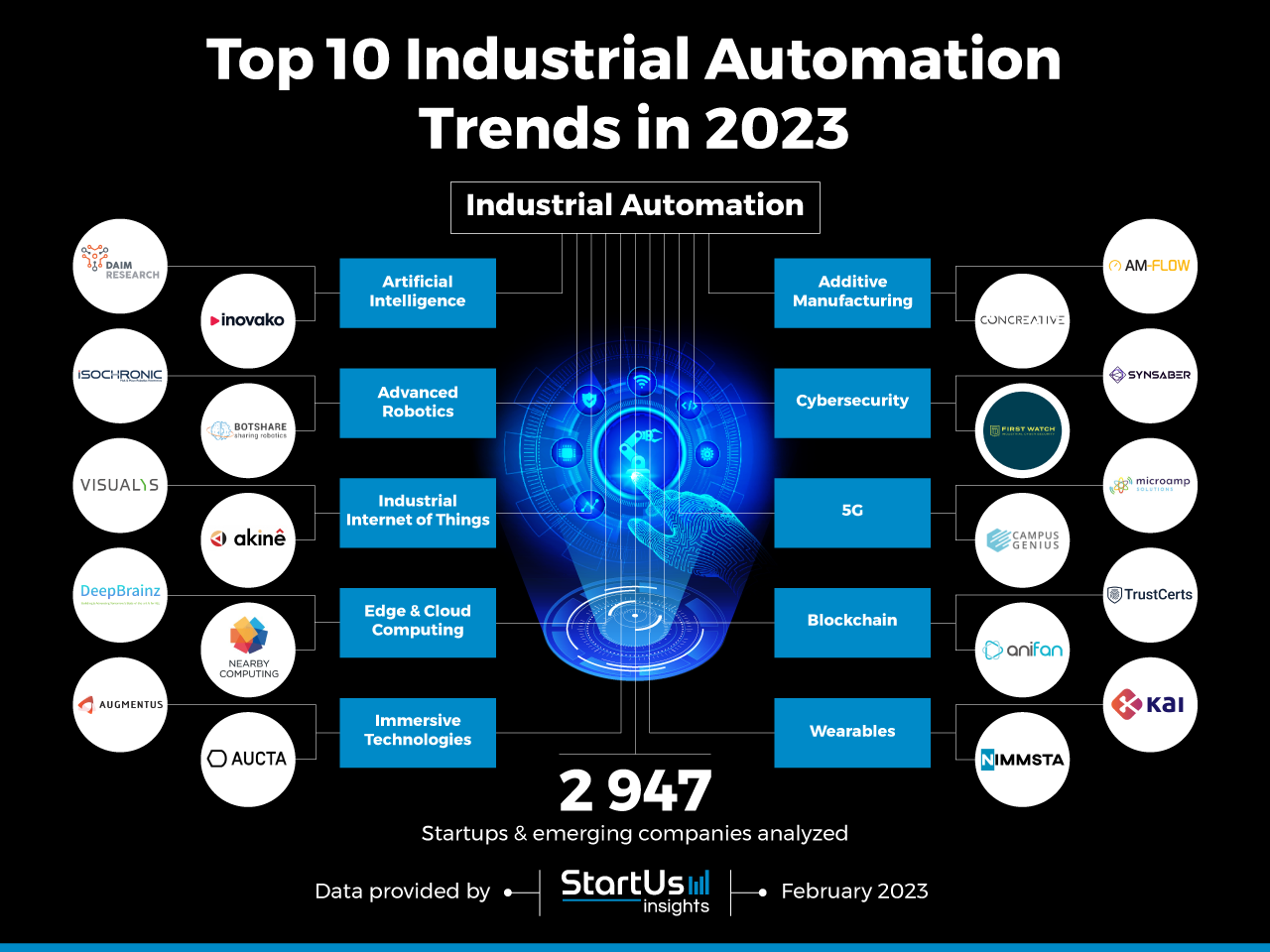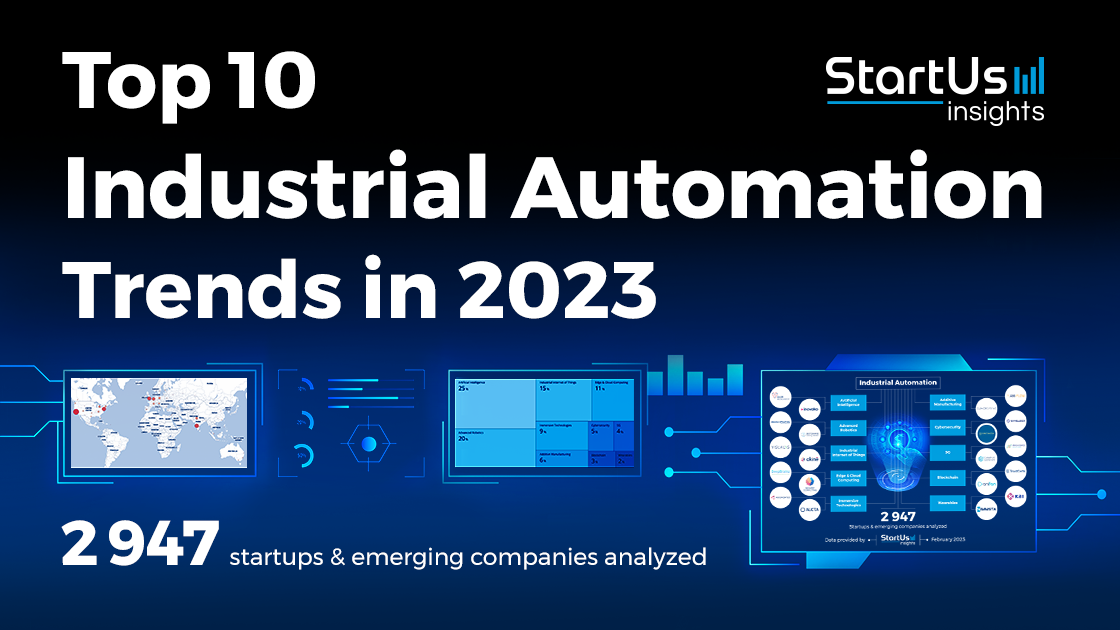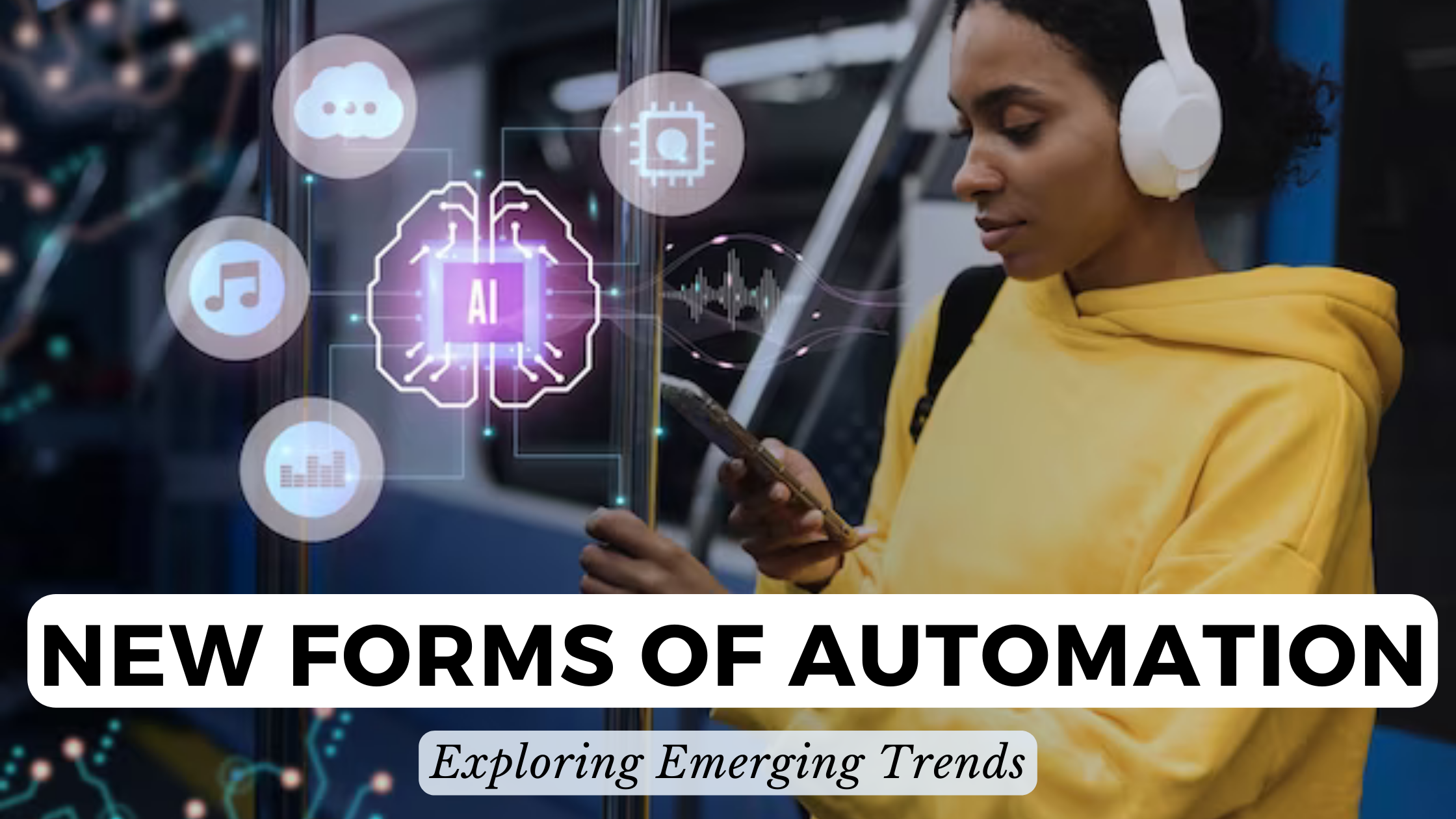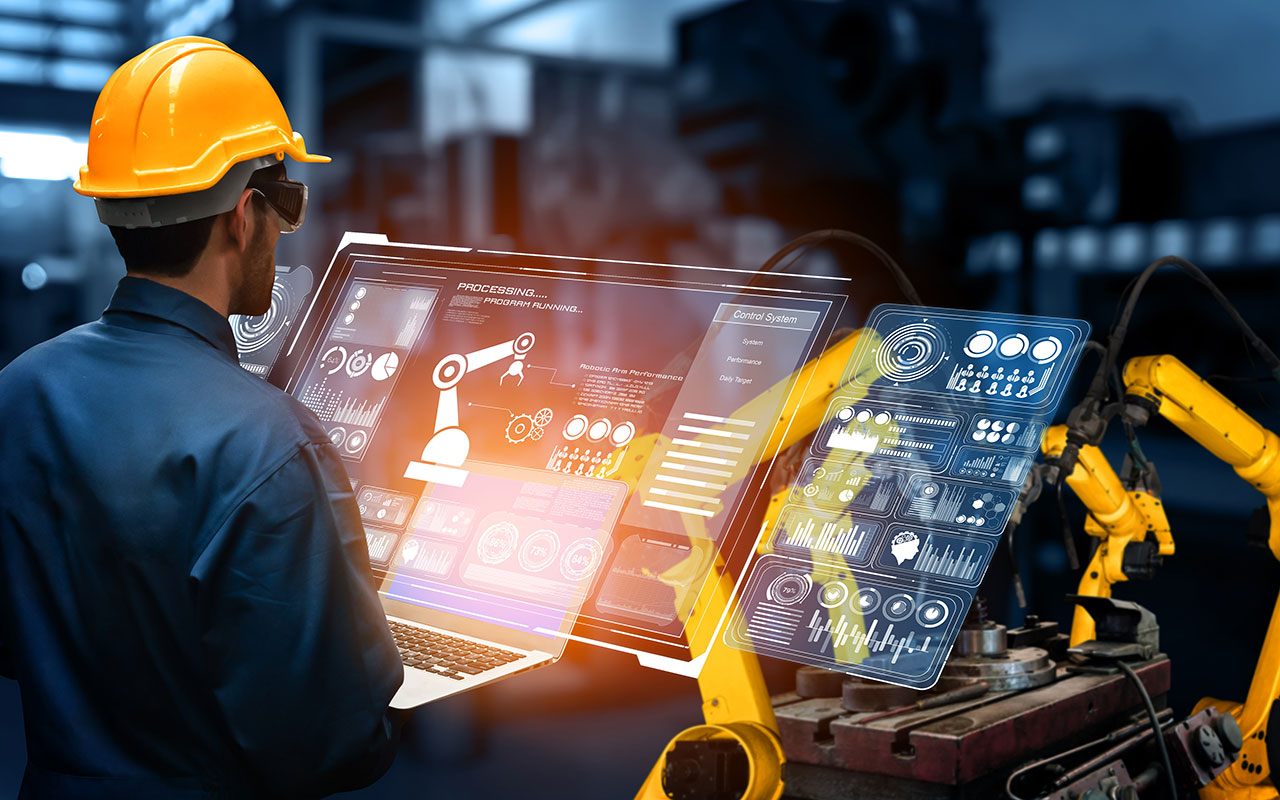Get all AIReputors OTO links to the direct sales pages. With the big discount and three hot bonus packages, with AIReputors OTO hot bonuses packages value $40k , From artificial intelligence and machine learning to robotic process automation and the Internet of Things, we will explore how these cutting-edge technologies are revolutionizing industries and reshaping the way we work. see all the AIReputors OTO sales pages below, with all the information for each OTOs.
AIReputors OTO
Note: We recommend getting the bundle deal edition ” FE + All Upgrades version ” and save $315
>> Front-End <<
>> OTO1 ‘Fast Pass’ Edition <<
>> OTO2 Unlimited Edition <<
>> OTO3 Platinum Edition <<
>> OTO4 Enterprise Edition <<
>> OTO5 RankReel Special Edition <<
>> OTO6 Koincart Special Edition <<
>> OTO7 ClickagencyAI Special Edition <<
Are you curious about the latest trends in automation technology? Look no further! In this article, we will take a closer look at the exciting advancements and innovations that are shaping the world of automation. So, grab your curiosity and join us as we embark on a journey to discover the latest trends in automation technology. You won’t want to miss it!
AIReputors OTO – AI and Machine Learning in Automation
Enhanced data analysis
AI and machine learning have revolutionized data analysis in automation. With advanced algorithms and powerful computing capabilities, these technologies can process and analyze large volumes of data in real-time. By extracting valuable insights and patterns from the data, AI and machine learning algorithms enable businesses to make informed decisions and optimize their processes. Whether it’s detecting anomalies, identifying trends, or predicting future outcomes, enhanced data analysis through AI and machine learning has become a game-changer in automation.
Predictive maintenance
Another trend in automation technology is the application of AI and machine learning in predictive maintenance. Traditional maintenance practices were often based on schedules or reactive measures, leading to unnecessary downtime and costs. With AI and machine learning, equipment and systems can be monitored in real-time, analyzing data to predict potential failures or malfunctions. By identifying maintenance needs proactively, businesses can reduce downtime, enhance asset performance, and save costs.
Intelligent robots
Intelligent robots powered by AI and machine learning algorithms are transforming industries. These robots can learn and adapt to different tasks, making them highly versatile and flexible in various environments. From manufacturing to healthcare, intelligent robots are automating repetitive and physically demanding tasks, freeing up human workers to focus on more complex and creative tasks. With AI capabilities, these robots can also learn from their experiences, continuously improving their performance over time.
Automated decision making
Automation technology, combined with AI and machine learning, is enabling automated decision making. Businesses can leverage intelligent algorithms to process and analyze vast amounts of data, allowing them to make informed decisions quickly and accurately. From customer service to supply chain management, automated decision-making systems are enhancing efficiency and reducing human error. By automating routine decisions, businesses can streamline their processes and improve overall productivity.
AIReputors OTO – Internet of Things (IoT) Integration
Connected devices and systems
The integration of the Internet of Things (IoT) in automation has led to the proliferation of connected devices and systems. These devices can collect and exchange data, enabling seamless communication and collaboration between different components of an automated system. From sensors and actuators to smart appliances and machinery, IoT integration enables real-time data sharing, paving the way for more efficient and synchronized automation processes.
Real-time monitoring and control
IoT integration empowers real-time monitoring and control of automated systems. By connecting devices and sensors, businesses can gather data on various parameters such as temperature, pressure, or vibration. This real-time data can then be analyzed to detect anomalies, optimize performance, or trigger automated responses. Real-time monitoring and control enable businesses to proactively identify potential issues, improve the overall efficiency of their operations, and ensure a smoother workflow.
Energy efficiency and sustainability
Another key trend in automation technology is the focus on energy efficiency and sustainability through IoT integration. Connected devices and systems can collect data on energy consumption, allowing businesses to identify areas of inefficiency and implement measures for optimization. By leveraging this data, businesses can reduce their environmental footprint, minimize energy wastage, and contribute to a more sustainable future.
Improved asset management
With IoT integration, businesses can achieve improved asset management. Connected sensors and devices can provide real-time insights into the condition and performance of assets, enabling proactive maintenance and reducing downtime. By monitoring key parameters such as temperature, humidity, or usage patterns, businesses can optimize asset utilization, extend their lifespan, and minimize unnecessary maintenance costs.
AIReputors OTO – Robotics Process Automation (RPA)
Streamlined business processes
Robotics Process Automation (RPA) is revolutionizing the way businesses streamline their processes. By automating repetitive and rule-based tasks, RPA technology allows organizations to improve efficiency and productivity. Tasks such as data entry, report generation, or invoice processing can be automated, freeing up employees’ time for more strategic and value-added activities. RPA enables businesses to optimize their workflows, reduce errors, and enhance overall operational performance.
Error reduction and increased accuracy
RPA technology eliminates human error and ensures increased accuracy in business processes. Unlike humans, robots do not get fatigued or distracted, leading to consistent and error-free execution of tasks. By automating critical processes, businesses can minimize the chances of mistakes, improve data quality, and reduce the need for manual intervention or rework.
Cost-effectiveness and resource optimization
Implementing RPA technology can lead to significant cost savings for businesses. By automating repetitive tasks, organizations can reduce labor costs, as less human workforce is required for such activities. Moreover, RPA allows for resource optimization by reallocating human employees to more strategic and value-added roles. This not only improves overall efficiency but also enhances employee satisfaction and engagement.
Enhanced customer experience
RPA technology can greatly enhance customer experience by speeding up processes and minimizing errors. By automating tasks such as order processing or customer support, businesses can ensure faster response times, increased accuracy, and improved customer satisfaction. RPA enables businesses to deliver consistent and efficient services, leading to stronger customer loyalty and retention.
AIReputors OTO – Cloud-based Automation
Flexible and scalable infrastructure
Cloud-based automation provides businesses with a flexible and scalable infrastructure. By leveraging cloud computing technologies, organizations can easily scale their automation solutions based on their needs, without the constraints of physical hardware. Cloud-based automation enables businesses to adapt to changing demands, allocate resources efficiently, and ensure optimal performance without significant upfront investments.
Seamless integration and collaboration
The cloud-based automation model allows for seamless integration and collaboration between different systems and stakeholders. With data stored and processed in the cloud, businesses can easily connect various components of their automation ecosystem, regardless of their physical locations. This integration enables real-time data sharing, automation workflows, and collaborative decision-making, driving efficiency and innovation.
Improved accessibility
Cloud-based automation provides enhanced accessibility for businesses. With automation systems hosted in the cloud, authorized users can access them from anywhere and at any time, using a variety of devices. This flexibility allows for remote monitoring, management, and control of automated processes, ensuring businesses can stay connected and responsive even in a distributed or remote work environment.
Reduced infrastructure costs
By adopting cloud-based automation, businesses can significantly reduce infrastructure costs. Traditional automation systems require substantial investments in physical hardware, maintenance, and upgrades. On the other hand, cloud-based automation eliminates the need for managing and maintaining on-premises infrastructure, reducing costs associated with hardware procurement, installation, and maintenance.
AIReputors OTO – Edge Computing in Automation
Faster processing and reduced latency
Edge computing brings the processing power closer to the source of data, enabling faster data analysis and reduced latency. By processing data at the edge of the network, near the devices or sensors collecting it, automation systems can respond quickly to real-time events. This capability is particularly crucial in applications where real-time decision-making or immediate responses are required, such as autonomous vehicles or industrial control systems.
Decreased network congestion
Edge computing helps reduce network congestion by minimizing the data traffic sent to central cloud or data centers. Instead of transmitting all data to a centralized location for processing, edge devices can process and filter data locally, sending only the relevant information to the cloud. This reduces the strain on the network and ensures efficient utilization of network resources, improving overall performance and reliability.
Enhanced security and data privacy
Edge computing offers enhanced security and data privacy in automation systems. By processing data locally at the edge, sensitive information can remain within the physical boundaries of an organization, reducing the risk of unauthorized access or data breaches. Additionally, edge computing can enable real-time data encryption, ensuring secure transmission and storage of critical information.
Real-time decision making
Edge computing enables real-time decision-making capabilities by processing data at the edge of the network. In applications where immediate responses are required, such as autonomous vehicles or industrial control systems, edge computing ensures timely and context-aware decisions. This capability allows for faster autonomous actions, improved system responsiveness, and enhanced overall operational efficiency.
AIReputors OTO – Automation in Healthcare
Surgical robotics and assistance
Automation technology is transforming healthcare through surgical robotics and assistance. Robotic systems can assist surgeons during procedures, providing precise and dexterous movements, enhancing surgical accuracy, and reducing the invasiveness of surgeries. With the integration of AI and machine learning, these systems can learn from past surgeries, analyze data, and improve their capabilities over time, leading to better patient outcomes and shorter recovery times.
Automated diagnostic tools
Automation technology is revolutionizing diagnostics in healthcare. AI-powered diagnostic tools can analyze medical images, such as X-rays or MRIs, quickly and accurately. By leveraging machine learning algorithms, these tools can detect patterns and anomalies that might be missed by human radiologists, enabling earlier and more accurate diagnosis of diseases. Automated diagnostic tools enhance efficiency, avoid misinterpretations, and contribute to better patient care.
Electronic health records management
Automation plays a vital role in managing electronic health records (EHRs) efficiently. By automating processes such as data entry and updates, appointment scheduling, or billing, healthcare providers can streamline administrative tasks and reduce paperwork. Automation ensures the accuracy and accessibility of patient information, facilitating seamless coordination and communication between healthcare professionals and improving the overall quality of care.
Telehealth and remote patient monitoring
The integration of automation technology in telehealth and remote patient monitoring has revolutionized healthcare delivery. Through connected devices and sensors, patients can monitor their vital signs and health conditions from the comfort of their homes. Automated alerts and notifications can be set up to inform healthcare providers of any abnormalities or emergency situations. Telehealth and remote patient monitoring enable timely interventions, reduce hospital visits, and empower patients to actively participate in their own care.
AIReputors OTO – Automation in Manufacturing
Automated assembly lines
Automation technology has transformed manufacturing through automated assembly lines. Robots and machines can perform repetitive and precise tasks, such as assembling, welding, or painting, with unmatched speed and accuracy. This automation reduces human error, increases production efficiency, and enables cost-effective mass production. Automated assembly lines streamline manufacturing processes, shorten production cycles, and improve product quality.
Smart factories
Smart factories, enabled by automation technology, are redefining manufacturing. By integrating robotics, AI, machine learning, and IoT, smart factories create interconnected and intelligent manufacturing environments. Sensors and devices collect data throughout the production process, enabling real-time insights and predictive analytics. Smart factories optimize production schedules, improve resource allocation, and enable agile responses to changing market demands.
Quality control and inspection
Automation technology plays a crucial role in quality control and inspection processes in manufacturing. Automated systems can perform inspections and verifications with high precision and consistency, ensuring compliance with quality standards. Whether it’s detecting defects, measuring dimensions, or analyzing product characteristics, automation technology eliminates human error and subjectivity, leading to improved product quality and customer satisfaction.
Inventory management
Automation technology enhances inventory management in manufacturing. Through real-time data monitoring and analytics, businesses can optimize their inventory levels, ensuring the availability of materials and components while minimizing excess stock. Automation systems can generate automated alerts and reports, enabling proactive inventory replenishment and minimizing the risk of stockouts. Efficient inventory management improves production planning, reduces costs, and enhances overall supply chain performance.
AIReputors OTO – Automation in Agriculture
Precision farming and smart irrigation
Automation technology is revolutionizing agriculture through precision farming and smart irrigation systems. Connected sensors and devices collect data on soil conditions, moisture levels, and weather forecasts. By analyzing this data, farmers can optimize irrigation schedules, minimize water usage, and ensure the optimal conditions for crop growth. Precision farming techniques, empowered by automation, lead to higher crop yields, reduced resource wastage, and improved sustainability.
Drone-assisted crop monitoring
Drones equipped with cameras and sensors have transformed crop monitoring in agriculture. These autonomous aerial vehicles can capture high-resolution images and collect data on plant health, growth rates, and pest infestations. Automation algorithms analyze this data, allowing farmers to detect potential issues and take proactive measures. Drone-assisted crop monitoring provides timely and accurate insights, enabling precise crop management, and minimizing crop losses.
Automated harvesting and sorting
Automation technology enables automated harvesting and sorting processes in agriculture. Robotic systems can perform tasks such as fruit picking, crop harvesting, or sorting with speed and precision. By automating these labor-intensive processes, farmers can reduce reliance on manual labor, improve operational efficiency, and address labor shortages. Automated harvesting and sorting enhance productivity, reduce costs, and ensure consistent crop quality.
Livestock management
Automation technology plays an essential role in livestock management in agriculture. Automated systems can monitor animal health, feed intake, and behavior patterns, enabling early detection of diseases or abnormalities. Connected devices and sensors provide real-time data, allowing farmers to make informed decisions regarding animal welfare and nutrition. Automation in livestock management leads to healthier animals, improved production efficiency, and higher profitability for farmers.
AIReputors OTO – Automation in Transportation and Logistics
Autonomous vehicles and drones
Automation technology is revolutionizing transportation and logistics through the integration of autonomous vehicles and drones. Autonomous vehicles, such as self-driving cars or trucks, can navigate and transport goods without human intervention, significantly reducing the risk of accidents and optimizing delivery routes. Drones enable fast and efficient deliveries in hard-to-reach areas, enhancing last-mile logistics. Automation in transportation and logistics improves efficiency, reduces costs, and enhances customer satisfaction.
Route optimization and fleet management
Automation technology enables route optimization and efficient fleet management in transportation and logistics. Algorithms analyze data on factors such as traffic conditions, delivery schedules, or fuel consumption to optimize routes and schedules, maximizing delivery efficiency. Automation systems also provide real-time visibility into the status and location of vehicles, enabling proactive maintenance and enhancing logistics coordination. Route optimization and fleet management automation streamline operations, reduce fuel consumption, and improve overall productivity.
Warehouse automation
Automation technology revolutionizes warehouse operations through automated systems such as robotic pickers or automated conveyor belts. Robots can perform tasks such as goods sorting, packing, or inventory management, improving operational speed and accuracy. Automated systems enable efficient space utilization, minimize errors, and ensure smooth material flow within warehouses. Warehouse automation optimizes inventory management, reduces labor costs, and enhances order fulfillment efficiency.
End-to-end supply chain visibility
Automation technology provides end-to-end supply chain visibility, enabling real-time monitoring and control of goods from the point of origin to the point of delivery. Connected devices and systems track shipments throughout the supply chain, providing updates on location, temperature, or condition. This visibility allows businesses to proactively address any issues, optimize logistics processes, and enhance collaboration with suppliers and customers. End-to-end supply chain visibility automation improves efficiency, ensures timely deliveries, and reduces risks.
AIReputors OTO – Automation in Customer Service
Chatbots and virtual assistants
Automation technology enhances customer service through the use of chatbots and virtual assistants. These AI-powered systems can interact with customers, providing information, assistance, or resolving common queries. By automating routine interactions, businesses can provide faster responses, ensure consistency, and free up human customer service representatives to handle more complex inquiries. Chatbots and virtual assistants improve customer satisfaction, reduce wait times, and enhance overall service quality.
Automated call routing
Automation technology improves call routing in customer service. Automated systems can analyze customer queries and route them to the most appropriate agent or department, based on their skills, availability, or specialization. This automation ensures that customers are quickly connected to the right representative, reducing wait times and improving first-call resolution rates. Automated call routing enhances efficiency, reduces customer frustrations, and optimizes resource allocation.
Personalized customer interactions
Automation technology enables personalized customer interactions. By leveraging customer data and AI algorithms, businesses can tailor their communication and recommendations based on individual preferences or purchase history. Automation systems can deliver targeted offers, personalized emails, or recommendations, providing a more tailored and engaging customer experience. Personalized customer interactions enhance customer loyalty, foster brand advocacy, and drive revenue growth.
Self-service portals
Automation technology facilitates self-service portals, empowering customers to find information or resolve issues independently. Self-service portals provide access to knowledge bases, FAQs, or troubleshooting guides, allowing customers to find answers to their queries without direct human assistance. By enabling self-service options, businesses can improve customer satisfaction, reduce customer support costs, and free up human representatives to handle more complex cases.
In conclusion, automation technology is rapidly advancing across various industries, revolutionizing processes, optimizing operations, and enhancing overall efficiency. From AI and machine learning in data analysis and decision-making to IoT integration for real-time monitoring and control, automation is transforming the way businesses operate. Robotics Process Automation (RPA) streamlines tasks, reduces errors, and enhances customer experience, while cloud-based automation provides flexibility and cost-effectiveness. Edge computing enables faster processing and real-time decision-making, while automation in healthcare, manufacturing, agriculture, transportation, and customer service brings significant benefits to each sector. As automation continues to evolve, businesses must embrace these trends to remain competitive in the modern digital era.




